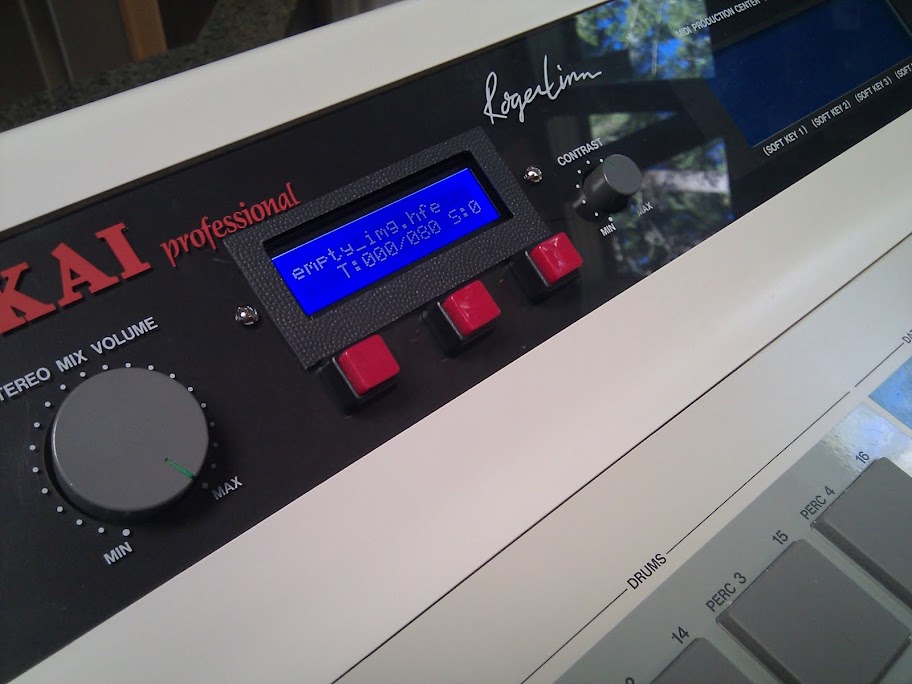Plexicube wrote:I've been using the ASQ-10 as my main sequencer for a bit now. ..I'm currently trying to decide if I would at all benefit from upgrading my ASQ to OS 3.10. As the standardization of the MIDI file format doesn't affect me much, what is actually gained?
I dont have 3.10 on my ASQ10, but there are benefits to be gained from using the upgrade, just as there are on the MPC60. Just not the sampling features.
MIDI File Save and LoadLoad standard PC-format MIDI file disks or save sequences as MIDI files. Move sequences between your MPC and PC or Mac sequencers.
Note: this requires that you download our Midi File Save utility, save it to an MPC60 floppy then boot your MPC60 from it.
Hard Disk Save and LoadIf you own the Marion Systems MPC-SCSI Hard Disk Interface for the MPC60, hard disk save and load operations are now included and work with the Iomega Zip 100mB or 250 mB drives.
Step from Note to Note in Step EditIn Step Edit, the REWIND [<] and FAST FORWARD [>] keys may now be used to search to the previous or next event within a track, regardless of location. Also, you may now cut and paste events.
Streamlined MPC3000 DisplaysScreen displays are improved and more intuitive, nearly identical to the MPC3000. For example, 4 letter pad names are replaced in screens by the full sound name.
New Sequence Edit FeaturesMost sequence editing functions now permit selection of specific drums to be edited. The new Shift Timing feature shifts track timing independent of timing correction. And the new Edit Note Number Assignment feature permits, for example, all snare notes in a track to be changed to rimshots or any other sound.
from the 3.10 Manual, page 228.
Version 3.1 software may be installed in the Akai ASQ10 MIDI Sequencer, substantially enhancing its sequencing capabilities to that of an updated MPC60. This is because the ASQ10 is internally identical to the MPC60’s sequencer section, lacking the MPC60’s sound generation, sampling and drum pad functions.
However, version 3.1 software is optimized for the MPC60 and will therefore present the following inconveniences to the ASQ10 user:
• The ASQ10’s TEMPO button will have the function of the MPC60’s TEMPO/SYNC button.
• The ASQ10’s SYNC button will have the function of the MPC60’s DRUM MIXER button, which is useless on the ASQ10.
• The ASQ10’s DRUMS button will have the function of the MPC60’s SOUNDS button, which is useless on the ASQ10.
• Various screens will present parameters related to sound generation, sound or program disk files, or use of drum pads, all of which are useless on the ASQ10.
Despite these inconveniences, version 3.1 software will add the same new sequencing capabilities to the ASQ10 as to the MPC60, significantly enhancing the usefulness and value of the ASQ10.
To me, it appears that the main benefit to ASQ10 owners is better sequence editing features, and the ability to load/save MIDI files which is always going to be useful when your other gear uses MIDI files. Others may see it differently...
What OS is your ASQ10 currently running?
And what happened to your modified MPC60II, did it have 3.10?
Plexicube wrote:






